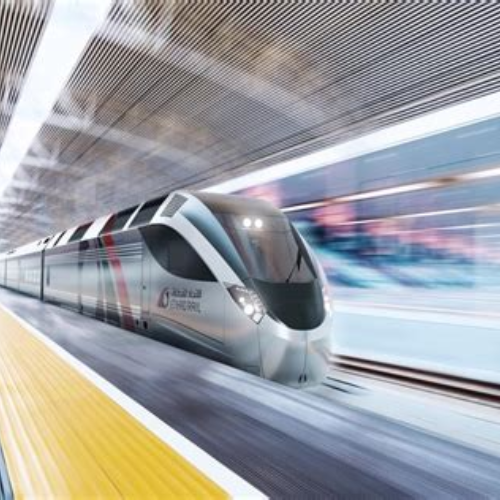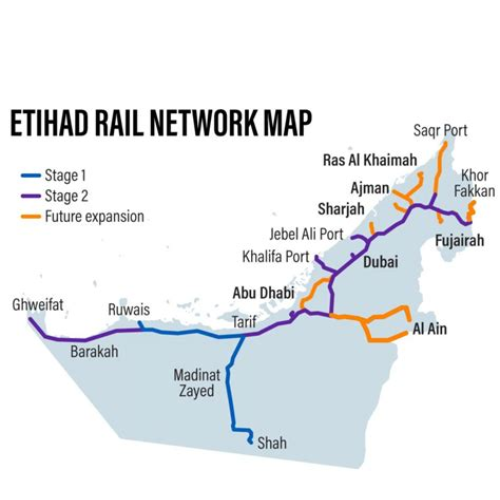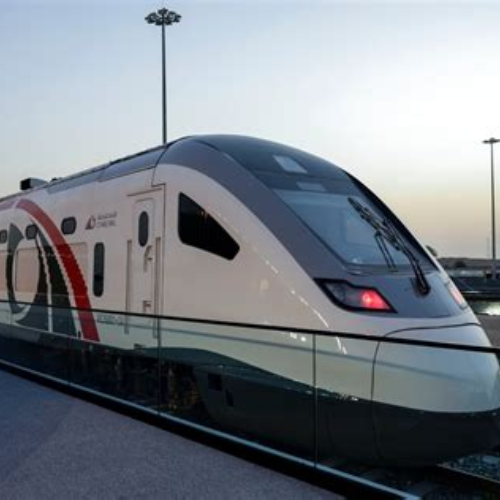Dubai to Abu Dhabi in Just 30 Minutes: A Look at the UAE's High-Speed Rail Revolution
In a ground breaking development for transportation in the UAE, the long-awaited high-speed rail project is taking shape, aiming to significantly reduce the travel time between Dubai and Abu Dhabi.
Ben Karasalih
4/12/20253 min read
Dubai to Abu Dhabi in Just 30 Minutes: A Look at the UAE's High-Speed Rail Revolution.
In a ground breaking development for transportation in the UAE, the long-awaited high-speed rail project is taking shape, aiming to significantly reduce the travel time between Dubai and Abu Dhabi. With the ongoing expansion of Etihad Rail, this high-speed train service is set to transform how residents and tourists travel between the two bustling emirates. In this blog, we will explore all the exciting details of this project, its benefits, and what it means for the future of rail travel in the UAE.
🚄 The Etihad Rail Project: A Game-Changer
The Etihad Rail network is a part of the UAE's ambitious infrastructure development plan, aimed at enhancing connectivity both within the country and across the GCC region. The new high-speed rail line will connect Dubai and Abu Dhabi, reducing the current travel time of 90 minutes to just 30 minutes. This will be made possible through speeds of up to 350 km/h, making it one of the fastest rail services in the region.
This ambitious project is poised to have a major impact on daily life, particularly for commuters and travellers. With construction well underway, the high-speed train is expected to have stops in key locations such as Reem Island, Saadiyat Island, Yas Island, and Zayed International Airport in Abu Dhabi, as well as Al Maktoum International Airport and Al Jaddaf in Dubai.
Expected Benefits:
Speed and Efficiency: With trains reaching speeds of 350 km/h, travel time between Dubai and Abu Dhabi will be reduced to 30 minutes, a huge improvement for anyone commuting or traveling for business or leisure.
Economic Impact: The project is forecast to contribute a remarkable AED 145 billion to the UAE's GDP over the next 50 years, providing a significant boost to the economy.
Environmental Benefits: High-speed trains are expected to be a more environmentally friendly alternative to road transport, supporting the UAE’s green initiatives by reducing traffic congestion and carbon emissions.
🛤️ Key Developments and Future Plans
While the high-speed train will be the crown jewel of this new rail line, it is not the only development planned for the Etihad Rail project. Alongside the high-speed train, a regular passenger train service will operate at 200 km/h, connecting other key emirates such as Sharjah and Fujairah. This will further enhance connectivity across the UAE, making it easier for residents and tourists to travel within the country.
Moreover, the UAE’s rail network is part of a larger plan to integrate with the Gulf Cooperation Council (GCC) rail system. This will promote smoother and more efficient regional travel, making the UAE an even more connected hub for business and tourism in the region.
📅 Timeline and Future Launch
Although the Etihad Rail project has been officially announced, no exact dates have been confirmed for the launch of the passenger services yet. The planning and contracting stages are currently underway, with final designs and agreements being finalised. However, the immense scale of this project suggests that the launch will likely take place in the next few years.
What to Expect:
Faster travel times
Reduced congestion on the roads
More sustainable travel options
Enhanced regional connectivity
🚗 The Future of Travel in the UAE
The Etihad Rail project isn't just about connecting Dubai and Abu Dhabi. It's about revolutionising the way people think about transportation in the UAE. With rapid urbanisation and growing populations, this rail system will provide a sustainable alternative to road transport, improving efficiency, reducing environmental impact, and supporting the country's ambitious future plans for smart cities and green initiatives.
For the millions of people who live and work between Dubai and Abu Dhabi, this rail network will soon offer an unprecedented level of convenience and speed, redefining daily commuting and regional travel.
Conclusion
The UAE’s high-speed rail project represents an exciting leap forward in the region's transportation infrastructure. Not only will it make travel between Dubai and Abu Dhabi faster, but it will also lay the groundwork for broader regional connectivity. With a focus on speed, efficiency, and sustainability, this project is set to become one of the UAE’s defining achievements of the 21st century.






